Controversial Japanese Whaling
Air Date: Week of October 17, 2014
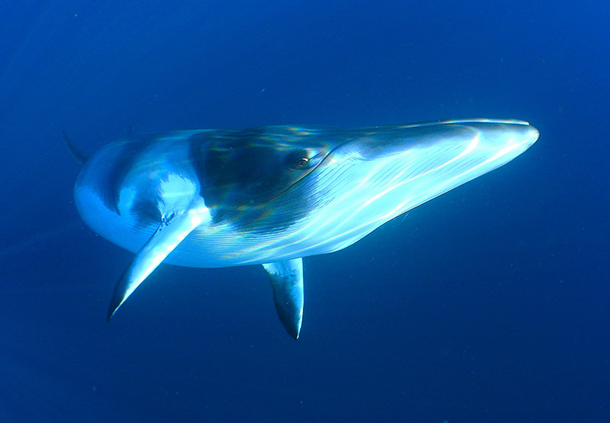
Minke Whale is the species most killed in Japanese Whaling practices. (Photo: Len2040; Flickr CC BY-ND 2.0)
There’s a global moratorium on commercial whaling, but Japan continues to kill thousands under the guise of “research”. Host Steve Curwood discusses Japan’s motives for this continued flouting of international rules with Dr. Phillip Clapham of NOAA’s National Marine Mammal Laboratory.
Transcript
CURWOOD: At two hundred tons, the blue whale is the largest animal known to have inhabited the Earth, but it was hunted to near extinction back in the days of whaling. Thanks to a moratorium on whaling that began in the mid 80’s, the blues and other whales have been coming back, although very slowly. But the moratorium does allow whaling for the purposes of research, and in the name of science, the Japanese have killed thousands of whales in recent decades. Phillip Clapham directs whale research at NOAA’s National Marine Mammal Laboratory in Seattle. We called him to discuss Japan’s whaling research program.
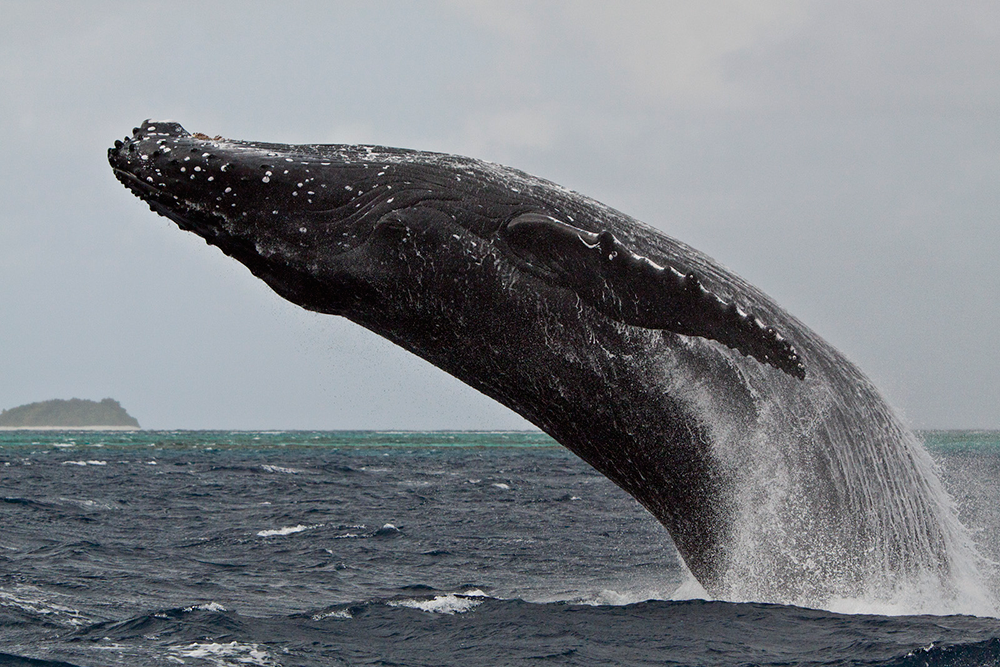
A Humpback whale breaches. (Photo: Colin Baxter Photography)
CLAPHAM: Since the moratorium, Japan has killed a large number of whales. It claims that’s necessary research that's important for the management of whaling. Many of us believe it is simply a convenient way around the moratorium.
CURWOOD: So what exactly are the research whaling programs that Japan has? You said they've killed thousands of whales under this program.
CLAPHAM: Since 1987, they've killed more than 14,000 whales under this program, and the program actually exists in two places; in the Antarctic, and there's a parallel program in the north Pacific. There's really very little the Japanese are doing that is of direct relevance to the management of whales and even if it is, nowadays there are so many nonlethal techniques, which are as good or in many cases better than the technique of killing a whale to study it.
CURWOOD: What types of whales are being taken?
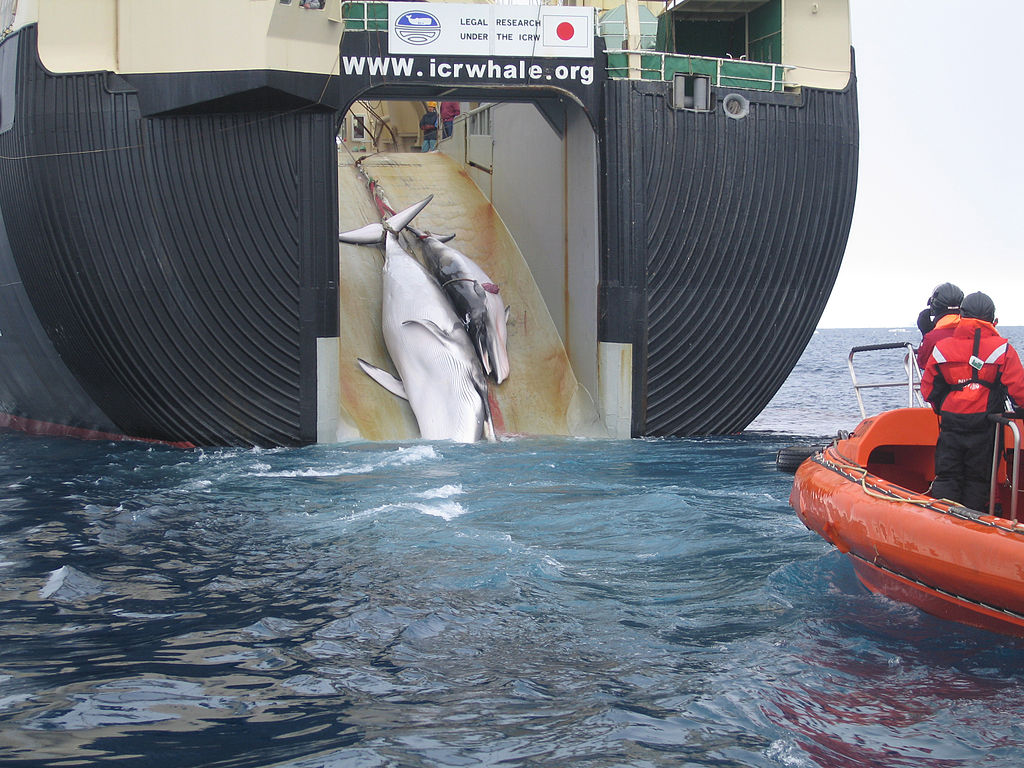
An adult and sub-adult Minke whale are dragged aboard the Nisshin Maru, a Japanese whaling vessel that is the world's only factory whaling ship. An explosive-packed harpoon reportedly caused the wound that is visible on the calf’s side.
Australian customs agents took this image in 2008, under a surveillance effort to collect evidence of indiscriminate harvesting, which is contrary to Japan's claim that they are collecting the whales for the purpose of scientific research. (Photo: Australian Customs and Border Protection Service; CC-BY-SA-3.0-au)
CLAPHAM: Primarily it's a small whale called the Minke whale, which is the smallest of the so-called large whales. There are also, in the north Pacific mostly, some other whales being taken: Sperm whales, Brutus whales, Sei whales, which are much bigger whales.
CURWOOD: Now as I understand it, the international Court of Justice recently made a finding about Japan's research whaling programs that would require Japan to stop that.
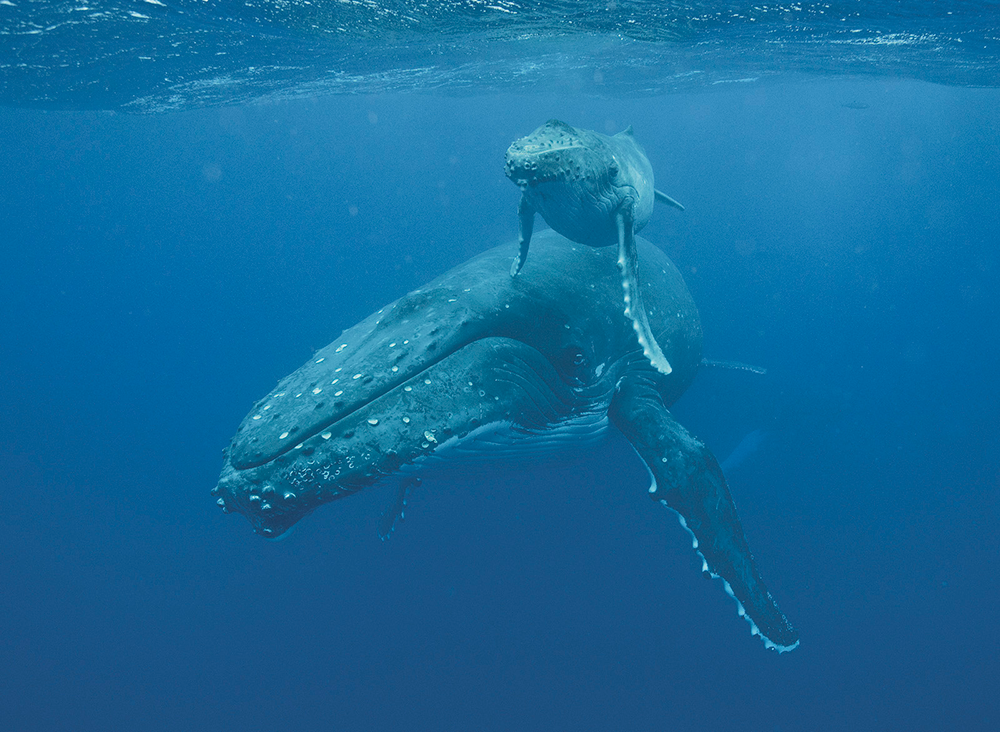
A Humpback whale and her calf. Humpback whales are one of the species taken from the Antarctic and killed for Japan’s scientific “research” under the JARPA II program. (Photo: Colin Baxter Photography)
CLAPHAM: Well, yes and no. The ICJ decision was very interesting. It happened in March this year. And Australia and actually New Zealand took Japan to the Court of Justice, and they claimed that the scientific whaling that Japan was doing was actually not for the purposes of scientific research. So what the court did was to look at a number of factors: the scale of the Japanese catch in the Antarctic, the way that they calculated the sample sizes, the number of animals they've actually killed relative to the sample size, what the timeframe and the publication record was, and how well they had coordinated with other research programs. And the courts, after looking at all this, came out and said that actually, no, it wasn't for the purposes of scientific research, and therefore Japan had violated that article, Article 8, of the Convention. So what the court then did was to say, “You [the Japanese] must basically cancel and revoke any permits for this particular program, which was in the Antarctic and not issue any more.” It didn't, however, affect the north Pacific program, and many people at the time were very optimist about this. They thought this would be a way for Japan to cancel its Antarctic whaling operation finally, and maybe it would actually extend to the north Pacific. But as we've seen in subsequent months, none of that has happened.
CURWOOD: So Japan is still in the Antarctic and in the north Pacific.
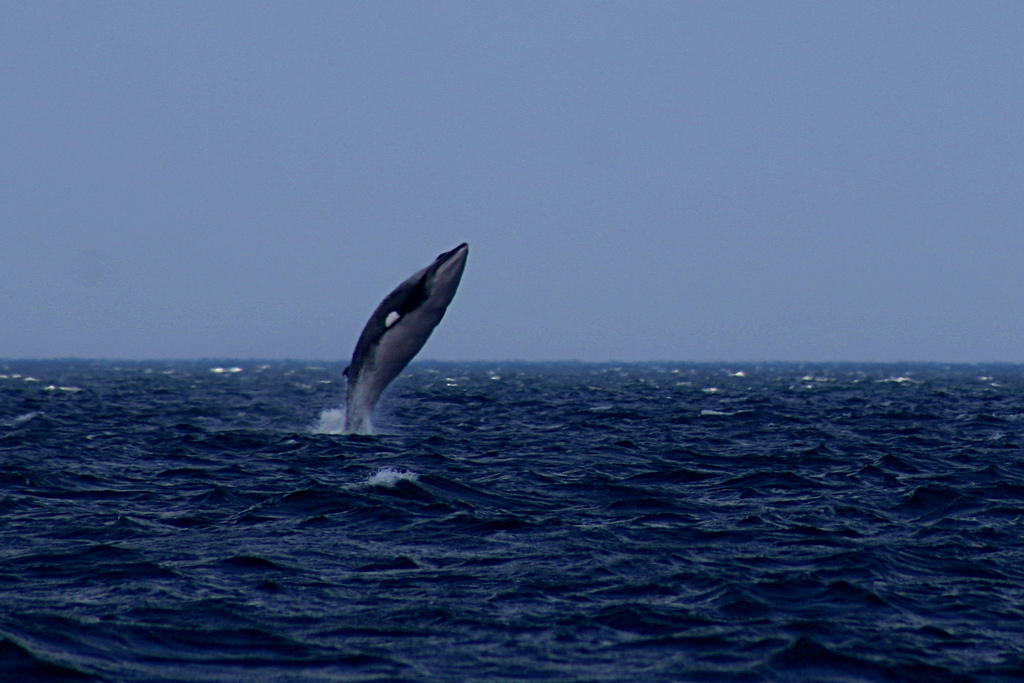
A minke whale breaches. (Photo: Martin Cathrae; Flickr CC BY-SA 2.0)
CLAPHAM: Yes, they continue the north Pacific program this summer, albeit with a somewhat smaller catch, and they've announced their intention to submit a new proposal to the Whaling Commission. And no matter what criticism they get of that proposal, they will say that it is in keeping with the ICJ judgment, and they'll go ahead and start whaling again starting in late 2015 back in the Antarctic.
CURWOOD: Why do the Japanese take so many whales and then use so little of it? I gather there's quite a bit in cold storage at this point.
CLAPHAM: Yeah it's a complicated question. So it's a question really at a couple of levels. So, the research in Japan is conducted by a sort of quasi-governmental organization called Institute of Cetacean Research in Tokyo, or ICR. And ICR is funded by government subsidies and also by the sale the meat in Japanese markets, so there is a very strong incentive to continue whaling because, essentially, if whaling stops, then that institution goes out of business. There's also the larger issue of: the Japanese regard whaling as, really, a slippery slope. If they give in on whaling, then perhaps they are going to have to give in other fisheries issues too, and fish, as you know, is a major part of Japanese culture. Japan is a huge consumer of seafood, and so I think they’re really concerned that if they give in on whaling then Bluefin tuna, or something else they depend upon, may be next.
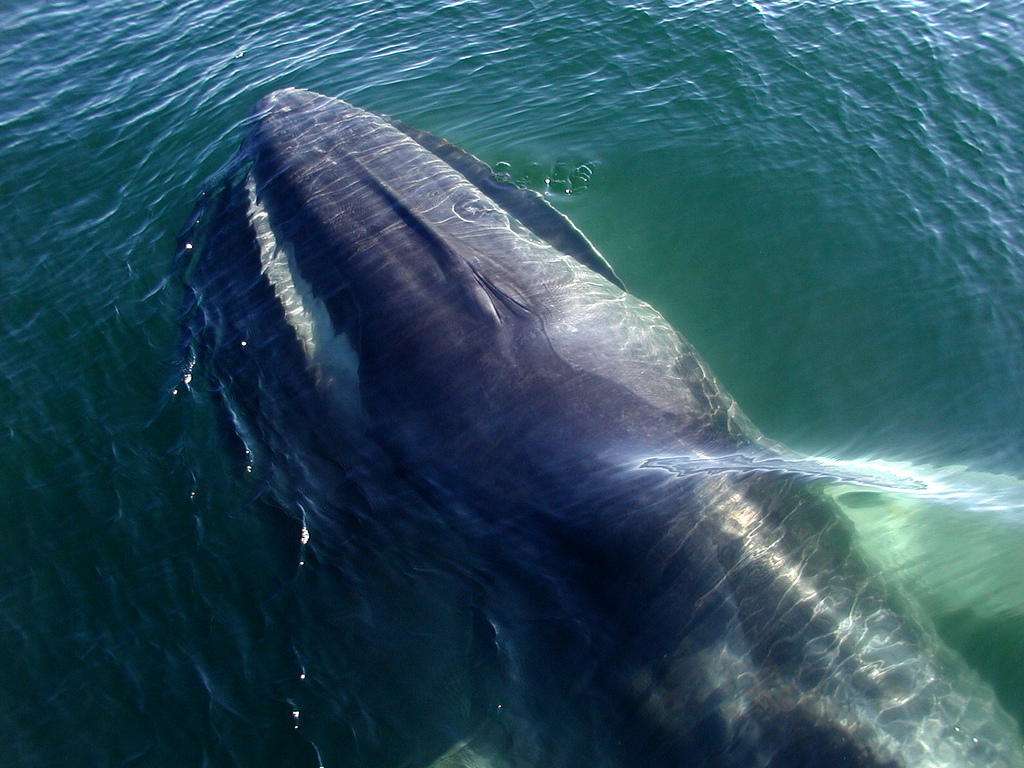
The Fin Whale (Balaenoptera physalus) is found in all oceans of the world and can weigh up to 70 tons and measure up to 88 feet. They may migrate to subtropical waters for mating and calving during the winter months and to the colder areas of the Arctic and Antarctic for feeding during the summer months; although recent evidence suggests that during winter fin whales may be dispersed in deep ocean waters. (Photo: Chris Buelow; Flickr CC BY-NC 2.0)
CURWOOD: Now, in terms of fishing some Japanese folks say that, “Look, you need to limit the number of whales because they eat fish, and, of course, we want to have fish.” What does your research tell you?
CLAPHAM: It's really a ridiculous argument. First of all, many of the big whales don't eat fish at all. In fact, the largest biomass of the world's Baleine whales live in the southern hemisphere, and they consume primarily krill there. You know, you need to consider the size of many whale populations—today they are at a small fraction of what their levels were in pre-whaling times when commercial fish populations where considerably larger and much healthier than they are today. There's a lot of other issues in this as well. Human overfishing clearly is the cause of the precipitous decline of commercial fishstocks worldwide; it isn't really whales. And, in fact, there has been some recent studies that have suggested that, to put it bluntly, through defecation, whales contribute really invaluable nutrients in large quantities to the marine environment, and in doing so, stimulate primary production, which is that the base of the whole food chain.
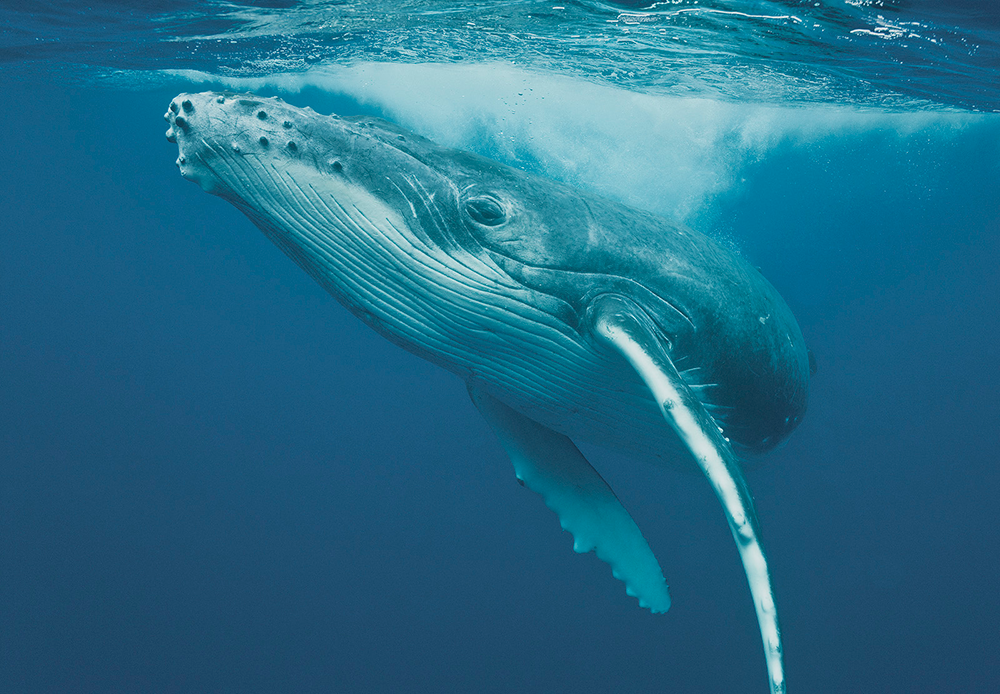
A Humpback whale surfaces for a breath. As a species, their population numbers are recovering. (Photo: Colin Baxter Photography)
CURWOOD: Phil, before you go, bring us up-to-date on just how whales are doing around the planet.
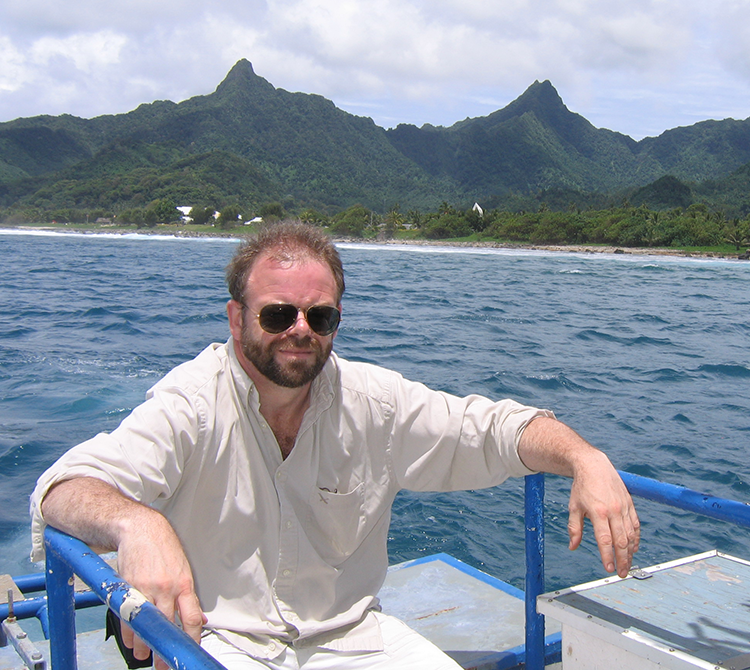
Dr. Phillip Clapham is the Program Leader of NOAA’s National Marine Mammal Laboratory’s Cetacean Assessment and Ecology Program, in Seattle, Washington. (Photo: Courtesy of Phillip Clapham)
CLAPHAM: Well, it depends on which species you're talking about. Actually I'm happy to say that many whales are doing very well. In the 20th century when industrial whaling really kicked into gear, two million whales were killed in just the southern hemisphere alone, most of those in the Antarctic, and there were several hundred thousand killed in the northern hemisphere also. And we reduced populations of whales in some cases to well below 1 percent of what their original pre-whaling numbers were. There were 369,000 blue whales killed in the 20th century. Today they're probably a couple of thousand left in the Antarctic, so less than 1 percent of the original. There were actually almost three-quarters of a million Fin whales killed. But, fortunately, many of those species are coming back now; humpback whales, for example, they have come back remarkably well in most places. They're an estimated 20,000 in the north Pacific right now, probably around 10 to 15,000 in the north Atlantic, and they seem to be doing very well without human interference. They're very resilient.
CURWOOD: Phillip Clapham directs whale research for the National Marine Mammal Laboratory of NOAA in Seattle. Thank you so much, Sir.
CLAPHAM: Thank you for having me.
Links
International Court of Justice’s judgment regarding Japan’s JARPA II program
Living on Earth wants to hear from you!
Living on Earth
62 Calef Highway, Suite 212
Lee, NH 03861
Telephone: 617-287-4121
E-mail: comments@loe.org
Newsletter [Click here]
Donate to Living on Earth!
Living on Earth is an independent media program and relies entirely on contributions from listeners and institutions supporting public service. Please donate now to preserve an independent environmental voice.
NewsletterLiving on Earth offers a weekly delivery of the show's rundown to your mailbox. Sign up for our newsletter today!
 Sailors For The Sea: Be the change you want to sea.
Sailors For The Sea: Be the change you want to sea.
 The Grantham Foundation for the Protection of the Environment: Committed to protecting and improving the health of the global environment.
The Grantham Foundation for the Protection of the Environment: Committed to protecting and improving the health of the global environment.
 Contribute to Living on Earth and receive, as our gift to you, an archival print of one of Mark Seth Lender's extraordinary wildlife photographs. Follow the link to see Mark's current collection of photographs.
Contribute to Living on Earth and receive, as our gift to you, an archival print of one of Mark Seth Lender's extraordinary wildlife photographs. Follow the link to see Mark's current collection of photographs.
 Buy a signed copy of Mark Seth Lender's book Smeagull the Seagull & support Living on Earth
Buy a signed copy of Mark Seth Lender's book Smeagull the Seagull & support Living on Earth

